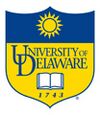Main Page: Difference between revisions
From cmpb
Jump to navigationJump to search
No edit summary |
No edit summary |
||
| Line 19: | Line 19: | ||
! <h2 style="margin:0;background-color:#cef2e0;font-size:120%;font-weight:bold;border:1px solid #a3bfb1;text-align:left;color:#000;padding:0.2em 0.4em;"> Course Topics</h2> | ! <h2 style="margin:0;background-color:#cef2e0;font-size:120%;font-weight:bold;border:1px solid #a3bfb1;text-align:left;color:#000;padding:0.2em 0.4em;"> Course Topics</h2> | ||
|- | |- | ||
|style="color:#000"|[[Image:she_ishe.jpg|left|350px|link=https://wiki.physics.udel.edu/wiki_qttg/images/0/00/She_graphene_au.pdf]] The bootcamp, scheduled for one week during Summer or Winter semesters on the campus of the Universit of Delaware, offers basic training and '''hands-on experience''' (via the Computer Lab sessions in 305 Pearson Hall) for graduate students in sciences (physics, chemistry, applied mathematics) and engineering (electrical, chemical, materials) to learn how to use open source of home-grown packages for computation of band structure (electronic, magnonic, phononic) of materials in equilibrium or simulate their properties out of equilibrium. The scientific software considered for the first route include DFT, GW and DMFT; while for the second route we employ TDDFT, quantum transport and classical micromagnetics or atomistic spin dynamics codes. | |style="color:#000"|[[Image:she_ishe.jpg|left|350px|link=https://wiki.physics.udel.edu/wiki_qttg/images/0/00/She_graphene_au.pdf]] The bootcamp, scheduled for one week during Summer or Winter semesters on the campus of the Universit of Delaware, offers basic training and '''hands-on experience''' (via the Computer Lab sessions in [https://ats.udel.edu/video/pearsonstudios/studiob/ 305 Pearson Hall]) for graduate students in sciences (physics, chemistry, applied mathematics) and engineering (electrical, chemical, materials) to learn how to use open source of home-grown packages for computation of band structure (electronic, magnonic, phononic) of materials in equilibrium or simulate their properties out of equilibrium. The scientific software considered for the first route include DFT, GW and DMFT; while for the second route we employ TDDFT, quantum transport and classical micromagnetics or atomistic spin dynamics codes. | ||
|}<!-- Start of right-column --> | |}<!-- Start of right-column --> | ||
Revision as of 10:34, 7 August 2024
|
|
| Instructors · UD Physics & Astronomy · UD College of Arts & Sciences | Help · WikiLaTeX · Categories · Media · A–Z index |
|
|
ACKNOWLEDGMENT: Parts of the course material is based upon work supported by the National Science Foundation through the University of Delaware Materials Research Science and Engineering Center, Grant No. DMR-2011824. Any opinions, findings, and conclusions or recommendations expressed in this material are those of the author and do not necessarily reflect the views of the National Science Foundation.
Wiki Getting Started
Consult User's Guide for information on using the wiki software.
